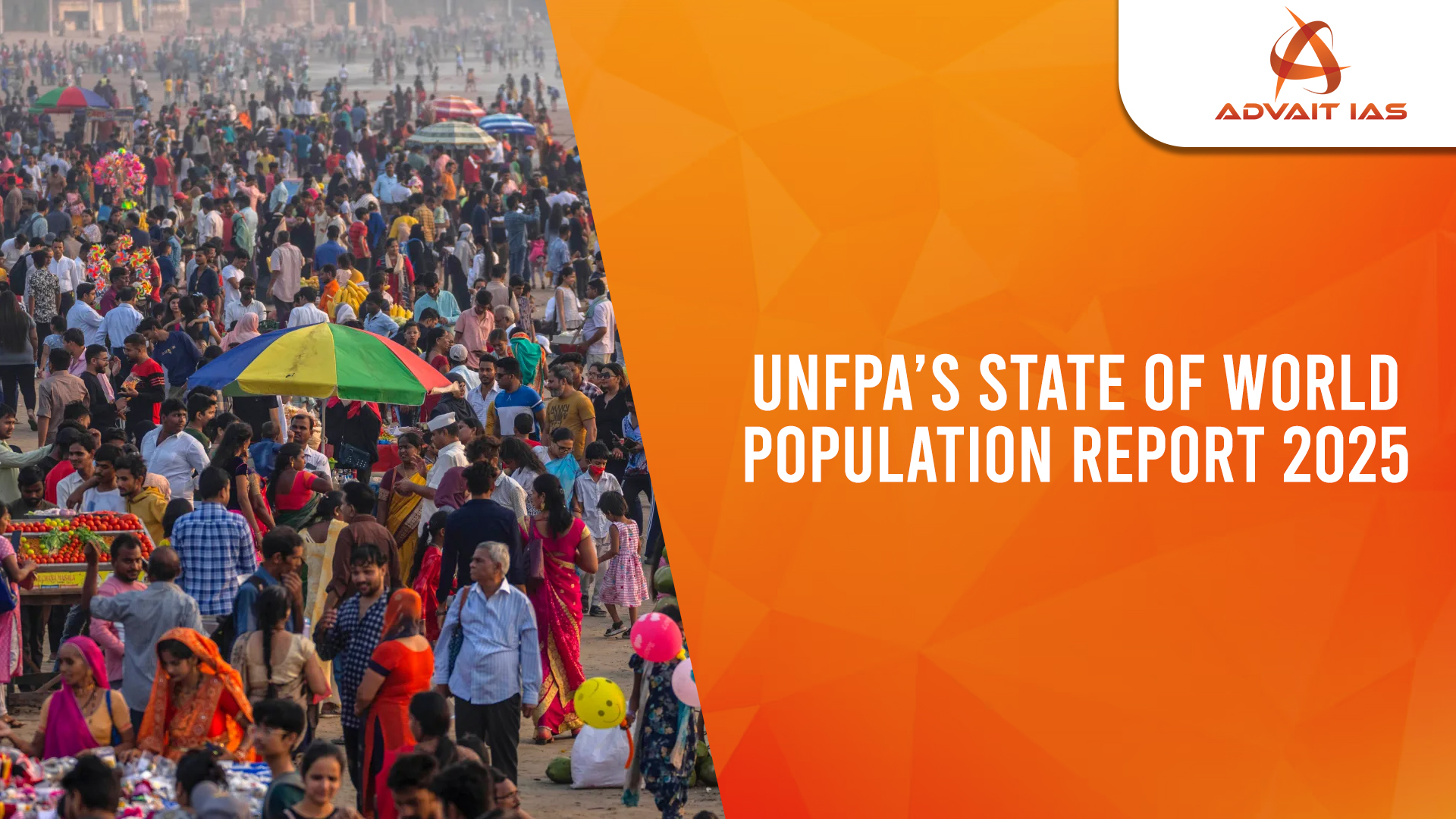India’s population has reached 1.46 billion in 2025, making it the world’s most populous country, surpassing China (1.41 billion).
- UNFPA’s (United Nations Population Fund) State of World Population Report 2025 outlines key demographic trends and challenges for India.
Key Highlights from the Report
- Population Projections:
- India’s population is expected to peak at 1.7 billion in the next 40 years before it begins to decline.
- In 2024, India’s population stood at 44 billion (UN World Population Prospects).
- Total Fertility Rate (TFR):
- TFR has declined to 9, below the replacement level of 2.1.
- A sharp fall from 0 in 1970 to ~2.0 by 2020s.
- As per NFHS 2019–21, TFR was 0 for the first time.
Regional Fertility Duality
- High Fertility States: Bihar (TFR 3.0), Meghalaya (2.9), Uttar Pradesh (2.7).
- Low Fertility States: Delhi, Kerala, Tamil Nadu — below replacement TFR.
- Rural–Urban Gap: 7 states haven’t reached replacement level in rural areas.
- TWFR–TFR Gap: Bihar and Meghalaya show higher fertility than desired (TFR 3.0 vs TWFR 2.2).
Adolescent Fertility Concern
- India’s adolescent fertility rate: 1/1,000 (aged 15–19).
- Higher than China (6.6), Sri Lanka (7.3), Thailand (8.3).
- Impacts maternal/child health, education, and workforce participation.
Underlying Challenges
- Reproductive Autonomy:
- Millions still lack informed reproductive choices.
- Women’s agency over childbirth remains limited in many parts.
- UNFPA-YouGov Survey Findings (2025):
- 1 in 3 Indians experienced unintended pregnancies.
- 30% couldn’t have desired number of children.
- 23% faced both scenarios.
- Barriers to Desired Family Size:
- Financial constraints – 39%
- Housing issues – 22%
- Job insecurity – 21%
- Lack of childcare – 18%
UNFPA’s Recommendations
- Shift policy focus from fear of overpopulation/ underpopulation to reproductive rights and choices.
- Promote greater reproductive agency – right to decide freely about sex, contraception, and family formation.
- Strengthen healthcare, child support systems, and economic security to reduce fertility-related stress.
India is at a critical demographic juncture — high population but declining fertility. The need of the hour is not panic, but progressive policy that respects individual choices, ensures access to reproductive health, and reduces socio-economic barriers.






